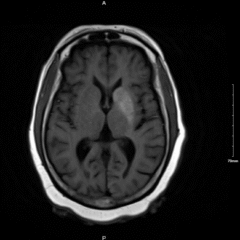Trauma and Hyperthermia
ABSTRACT:
Audience:
Emergency medicine residents and medical students on emergency medicine rotation
Introduction:
Participating in strenuous activities during hot, humid weather places a person at risk for heat emergencies such as heat exhaustion and heat stroke. When the environmental temperature is greater than 35◦ Celsius (95◦ F), the body can no longer radiate heat to the environment. When the humidity is greater than 75%, the body can no longer use evaporation for cooling.1 The hot, humid environment has effectively eliminated both mechanisms to decrease body heat, and the individual is at risk for exertional heat injury.1 Altered mental status that occurs during heat stroke interferes with the ability to obtain an adequate history as to the etiology of hyperthermia and altered mental status. It is imperative that the patient receive cooling measures immediately and that supportive measures be instituted while evaluating the patient for other etiologies including trauma-related injuries.1, 2, 3
Educational Objectives:
By the end of this oral board session, examinees will be able to: 1) construct a differential to evaluate a patient with undifferentiated altered mental status and trauma, 2) recognize the signs and symptoms of heat stroke, 3) complete an evaluation of a patient with both hyperthermia and trauma, and 4) demonstrate efficient and correct treatment of a patient with hyperthermia.
Educational Methods:
This oral board case followed the standard American Board of Emergency Medicine style case in a tertiary care hospital with access to all specialists and resources needed. This case was tested using seven first-year and five second-year residents in an ACGME (Accreditation Council for Graduate Medical Education) accredited emergency medicine residency program.
Research Methods:
Immediate feedback was solicited both from the learners and from the evaluators following the debriefing session. Residents were asked to evaluate the educational value of the case using a 1-5 Likert scale (5 being excellent). Evaluators were asked to score the residents using the ACGME core competencies with a scale of 1-8, 1-4 being unacceptable and 5-8 being acceptable.
Results:
Twelve residents (seven PGY-1 and five PGY-2) completed this oral board case. The average score was 5.34/8. Five residents missed zero critical actions. Six residents failed to explore other etiologies of altered mental status in the case once the temperature was requested and given. Three residents did not complete the primary and secondary survey searching for all injuries. Only two residents did not begin appropriate cooling measures.
The learners rated the educational value of the case as 4.8/5. Seven residents reported that the case increased their medical knowledge; five residents reported that it somewhat increased their medical knowledge. All residents rated the case as helpful in preparing to manage this medical condition.
Discussion:
The educational content from this case was effective. This is a high acuity moderate occurrence case that requires an extensive differential with a thorough evaluation as well as the recognition for immediate treatment of hyperthermia. This makes this case excellent for practice and discussion for the evaluation of patients with trauma and the treatment of hyperthermia. We learned during implementation that this case has a moderate degree of difficulty but does provide practice in the area of completing a thorough primary and secondary survey and education concerning best practices for treating heat emergencies.
Topics:
Altered mental status, heat emergency, heat stroke, hyperthermia, trauma.

